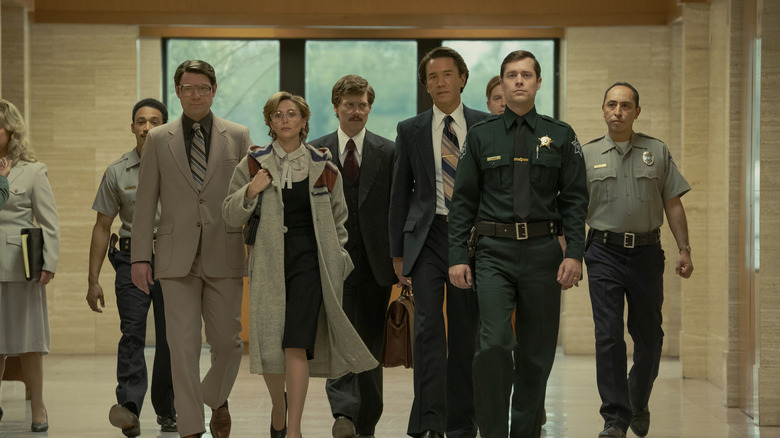Share this @internewscast.com
The story of Betty Gore and Candace “Candy” Montgomery, real-life friends whose relationship turned tragic, is a captivating and chilling tale from the 1980s. These suburban Texas church friends were entangled in a dramatic love triangle involving Betty’s husband, culminating in a brutal murder by Candy. This horror story, marked by themes of deception, societal expectations, domestic discontent, and religious duty, has inspired three different screen adaptations: CBS’s Emmy-winning 1990 TV movie “A Killing in a Small Town” with Barbara Hershey and Brian Dennehy, Hulu’s 2022 series “Candy” featuring Jessica Biel and Melanie Lynskey, and Max’s 2023 miniseries “Love & Death” starring Elizabeth Olsen, Jesse Plemons, and Lily Rabe.
The 1990 adaptation changes the characters’ names and mainly explores the murder’s aftermath, while both “Candy” and “Love & Death” delve into the evolution and destruction of the friendship between the Texas churchgoers, alongside the affair between Candy (Olsen) and Betty’s teacher husband, Allan (Plemons). They also cover the stunning trial that followed the murder of Betty (Rabe).
The complete truth of what occurred on Betty’s final day may only be known to the real Candy Montgomery. Max’s series presents Candy’s account, where she pled not guilty. Montgomery alleged that her violent act was self-defense, as Betty had confronted her with an axe over Candy’s past affair with her husband, which had already ended. She later attributed her extreme violence to a trauma-triggered reaction from being silenced by Betty, recalling her childhood experiences.
Despite the violent axe murder, Candy was acquitted of Betty’s killing
As portrayed in “Love & Death,” the real Candy Montgomery was tried for the murder of her one-time friend. The idea of an everyday housewife committing such a heinous act in the heart of small-town Texas proved to be a shock to suburbia, with spectators filling the courthouse for the duration of the eight-day trial and even lining up on the street outside, hoping to hear a guilty verdict. Instead, and certainly much to Montgomery’s relief, their demands for justice would be met with an acquittal by the jury. But it was the beginning of the 1980s, an era when folks were still taking regression hypnosis — the pseudoscience that would help ignite the burgeoning Satanic Panic into a four-alarm case of mass hysteria that would ruin many lives — quite seriously.
During Candy’s trial, the defense supported Montgomery’s self-defense claim with hypnosis therapy meant to prove the housewife had gone into a dissociative state in a fight-or-flight moment, during which she hit Betty again and again, not out of rage but out of instinctual self-preservation. The jury bought the entire story, acquitting Montgomery after just three short hours of deliberation. Trial-goers expressed strong reactions to the acquittal, particularly given the mousy housewife’s testimony revealing the tawdry details of her steamy extramarital affair with Allan. Their reactions during the trial had been raucous, punctuating the proceedings with groans, jeers, and name-calling aimed at Montgomery. When the verdict was read, an audible roar of disbelief erupted in the courtroom.
Despite public hate and even death threats, Candy moved on with her life. The Montgomerys eventually divorced in 1986, with Candy, perhaps ironically, going on to become a mental health worker who works with domestic abuse victims.











